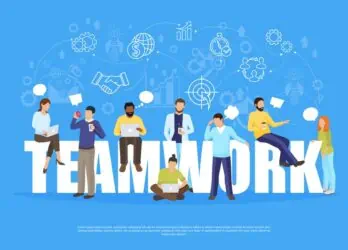Last updated on April 2, 2024 at 05:22 am
Training and development are crucial for any organization to stay ahead in today’s fast-paced business world. For frontline teams, this is especially important, as they directly interact with customers and represent the face of the company. However, finding the most effective training method can be a challenge for companies, especially with limited time and resources. In recent years, microlearning has gained popularity as an efficient tool for training frontline teams. But does it really outperform traditional training methods? In this blog post, we will explore the differences between microlearning and traditional training for frontline teams, their benefits and drawbacks, and which one ultimately works best for employee development
Also Read: theEMPLOYEEapp Launches Microlearning Platform
Microlearning vs. Traditional Training
Microlearning is a modern method of learning in which learners get bite-sized, focused chunks of learning material lasting from a few minutes to no more than fifteen. It usually entails presenting quick bursts of knowledge to learners in various formats, such as videos, quizzes, games, or interactive modules.
As per reports, microlearning has an average completion percentage of around 83%, as compared to traditional training, which has a 20%-30% completion rate. Because of its efficacy and efficiency, microlearning has grown in popularity in corporate training and development programs.
Traditional training, also known as the classroom experience, workshops, and online courses, is the conventional method of education. This strategy often involves lengthy, planned sessions that last hours or even days. In a typical learning setting, an instructor provides knowledge using lectures, group discussions, and hands-on exercises.
Compare and Contrast
Delivery
- Microlearning: Modules designed for microlearning are conveniently available via mobile devices, which are widely utilized by employees these days. The modules are generally 5 to 15 minutes long and can be accessed anywhere, anytime, at the employee’s convenience.
- Traditional learning: This approach requires a hefty time commitment from employees as the training consists of lengthy sessions that cannot be accessed in classroom settings.
Content
- Microlearning: The content of microlearning is small and bite-sized. Due to its short duration and various interactive ways to deliver training, this approach is highly customizable and enhances engagement.
- Traditional learning: The content of traditional training is lengthy, and it can take hours to days to finish a single module. Due to its length, time commitment, lack of flexibility, and more, training modules cannot be customized, resulting in a lack of employee engagement.
Cost
- Microlearning: Microlearning material is far less expensive to create. This is because shorter content development times reduce production costs and deployment time.
- Traditional learning: Due to lengthy content, traditional training material is expensive to create, deliver, and maintain.
Effectiveness
- Microlearning: This learning method is well-known for its efficiency, allowing for rapid access to particular expertise, which leads to knowledge retention, skill development, and application.
- Traditional learning: It provides comprehensive knowledge and a comprehensive understanding of complex subjects. However, due to its in-depth module, individuals find it difficult to retain the knowledge and apply it when needed.
A Deep Dive into Microlearning
The microlearning market is predicted to be worth USD 2.62 billion in 2024 and is expected to reach USD 4.87 billion by 2029, increasing at a CAGR of 13.13%. Let’s deep dive into microlearning to learn more about its advantages and potential challenges.
Advantages for Frontline Teams
- Improved engagement and motivation: Microlearning provides learners with tailored information that is more closely related to specific goals and learning objectives. As a result, they feel more secure in the lessons and are eager to engage. Additionally, microlearning is combined with a variety of interactive features such as gamification, quizzes, simulations, and more, which boosts employee engagement and motivation.
- Enhanced knowledge retention and recall: Microlearning decreases mental fatigue and reduces the stress of attempting to memorize and absorb vast quantities of information all at once. The bite-size chunks and interactive elements help individuals engage with the content, resulting in knowledge retention and recall.
- Just-in-time learning for specific situations: Microlearning is intended to be helpful in moments when the employee requires a certain piece of information. Thus, the learning opportunity has a favorable impact on the team’s conduct. This just-in-time learning approach is undoubtedly the most significant benefit for learners.
- Accessibility on mobile devices: Microlearning can be designed for multi-device delivery, spanning from desktops and laptops to tablets and smartphones, offering learners increased flexibility to access learning materials whenever and on whichever device they prefer.
- Reduced training time and cost: Microlearning is often less costly than standard training approaches. Additionally, the microlearning format reduces the costs associated with employee travel and time away from work. Further, these shorter, digitally distributed learning sessions are quicker and easier to deliver than other formats, resulting in substantial cost savings.
Potential Challenges
- Lack of depth and complexity: Microlearning lessons are typically brief, resulting in a lack of detailed knowledge. For example, nurses and doctors should not rely solely on healthcare micro-courses. They will require more in-depth discussions to understand certain complex topics, as well as monitored duties to put their skills and knowledge into effect in the real world.
- Difficulty covering broader topics: Microlearning provides tiny bits of information to the employee but fails to present a comprehensive picture. Therefore, a learner may end up with broken or unorganized online training sessions that appear unconnected. Additionally, microlearning lessons are not well adapted to more complex subject matter that includes several interconnected sub-topics, ideas, or concepts.
- Requires consistent content creation and delivery: Due to their nature, microlearning modules require consistent content creation and delivery to keep individuals engaged and provide relevant information when needed, which is a time-consuming process.
A Deep Dive into Traditional Training
Let’s deep dive into traditional training to learn more about its advantages and potential challenges.
Advantages for Frontline Teams
- In-depth coverage of complex topics: Traditional education creates a regulated learning environment in which lessons are structured and regular, providing in-depth coverage of complex topics.
- Opportunity for interaction and discussion: Direct teacher-student contact is another critical aspect, enabling learners to pose questions and promptly receive responses. Traditional training methods facilitate students by arranging face-to-face sessions with their instructors to efficiently discuss topics, assess performance, or collaborate on projects.
- Builds team relationships and collaboration: Through traditional training, individuals with different skills, expertise, and knowledge can learn together. This helps them build team connections and collaboration skills that can help them in both their personal and professional lives.
- Provides a structured learning environment: This approach to learning is systematic and planned, with learning objectives, material, delivery methods, and evaluation processes predetermined and tailored to achieve specified learning results.
Potential Challenges
- Time-consuming and expensive: This technique is time-consuming since it might take hours, days, or weeks to finish a module, and it is also time-bound because it follows a strict timetable that is difficult to adjust as needed. It is also expensive as it involves high infrastructure and maintenance costs.
- Less engaging for modern learners: In this modern era, people tend to get bored easily. They are in search of interactive content or learning methods that can keep them engaged throughout the learning process. This feature is lacking in traditional training, resulting in less engagement and retention for modern learners.
- Limited accessibility for remote teams: As traditional training requires the presence of learners in a physical setting, it provides limited accessibility for remote teams.
- Knowledge retention can be lower: Due to time constraints, traditional learning consists mostly of theory-based courses rather than activity-based ones. Fatigue among learners can further contribute to reduced retention rates.
Also Read: Real-Time Feedback for Frontline Workers: Driving Real-World Impact
Finding the Right Balance Between Traditional and Microlearning
Finding the right balance between traditional and microlearning is essential for effective training and development strategies. While traditional learning methods offer depth and structure, microlearning provides flexibility and accessibility. By combining the strengths of both approaches, organizations can create a comprehensive learning experience that caters to diverse learning styles and maximizes knowledge retention. This hybrid approach allows learners to engage with content through various formats, from in-depth lectures to bite-sized modules, ensuring that training remains engaging, relevant, and impactful.
Additionally, blending these methods fosters a culture of continuous learning by offering learners opportunities for ongoing development that align with their schedules and preferences. By striking the right balance, organizations can leverage the strengths of both traditional and microlearning methodologies to create a versatile and effective learning ecosystem that drives performance and growth.
Also Read: Agile Operations for Frontline Teams: Thriving in Dynamic Environments
To Sum Up
Industry data suggests a bright future for corporate blended learning. Its market was estimated at $5.6 billion in 2022 and is expected to reach $6.3 billion by 2030, rising at a CAGR of 9%, demonstrating the increased usage of blended systems as the primary training approach in businesses globally. Microlearning and conventional learning each have advantages and disadvantages. The microlearning vs traditional training argument does not have a one-size-fits-all solution. Microlearning gives flexibility, convenience, and focused learning, whereas traditional learning takes an organized and holistic approach to learning.
However, the efficiency of these strategies is determined by a variety of factors, including the learner’s preferences, the nature of the topic, the purpose, and the learning environment. The most essential element is to make learning immersive and effective, regardless of the method employed. It is up to educators and learners to recognize the advantages of both microlearning and traditional training and integrate them in a way that works best for them.
Frequently Asked Questions
1. When is traditional learning appropriate?
To provide in-depth knowledge of a particular subject. This method ensures that learners are exposed to a broad range of knowledge and skills, providing them with a well-rounded education.
2. What are some strategies for successful integration of microlearning and traditional learning?
Some strategies for successful integration include aligning microlearning content with specific learning objectives, providing easy access to microlearning materials through digital platforms, and incorporating microlearning sessions into regular training routines.
3. What are some common misconceptions or myths about microlearning and traditional learning that frontline teams should be aware of?
Some common misconceptions about microlearning include the belief that it lacks depth or cannot effectively cover complex topics. Additionally, there’s a misconception that traditional learning is always more effective due to its structured nature, disregarding the benefits of flexibility and accessibility offered by microlearning. Frontline teams should be aware that both approaches have their strengths and limitations, and the key lies in finding the right balance to meet learning objectives effectively.
Subscribe To The theEMPLOYEEapp Newsletter
Comments are closed.




